Sansawon Museum & Baesangmyeon Brewery: The Hanok To See & Try Traditional Korean Liquor
Last Updated on June 22, 2024
Just northeast of Seoul in Pocheon is one of the most beautiful and also traditional Korean liquor breweries you can find in Korea. Sansawon (전통술박물관 산사원) is a museum and tasting room just next to a beautiful brewery called Baesang,yeon (배상면주가) that features traditional onggi pots, those giant brown earthenware pots you see around Korea, that create a maze to wind through before ending up at a beautiful Hanok building and pavilion where you can laze away the afternoon.
I’d heard of Sansawon a few times over the years and was intrigued by the pictures but just never found the time to get up there… until recently. Want to take a day trip from Seoul and learn about and then taste some pretty amazing traditional Korean liquors? Do NOT miss this sool gallery. A bonus is that it’s also just unknown enough that you might have it all to yourself like we did.

Feel free to skip around and find what you need to find:
(This post contains affiliate links, which means I receive a certain percentage of a sale if you purchase after clicking at no cost to you. Thank you for your support.)
How To Get There
Pocheon, Korea has some really interesting and quite hidden spots to check out so make sure you check out some other great highlights of Pocheon so you can plan a fun day or weekend in the area.
Address: 25 Hwadong-ro 432beon-gil, Hwahyeon-myeon, Pocheon-si, Gyeonggi-do (경기도 포천시 화현면 화동로432번길 25 배상면주가)
Join A Tour: If you don’t have a car, Pocheon can be a little difficult to get around with public transportation. Plus Planner, a local tourism company has a great tour to Pocheon which you can book on Pelago which visits both the beautiful Pocheon Art Valley and Sansawon!
By Public Transportatin: From Gangbyeon Bus Terminal, catch a bus to Unaksan Rest Stop and Station. From there, walk to the road and find the bus stop and go just one stop on bus 5, 7, 7-1, 7-2, 11-1, or 66-1. Get off at the next stop and you’ll continue to walk in the direction the bus was headed and turn right on the second road you come to. Follow it in the the museum and brewery. You’ll be able to see signs from the main road.
Basic Information
Hours: 8:30am ~ 5:30pm
Days: Closed on holidays.
Admission: W3,000
Website: www.soolsool.co.kr
Classes: Classes are offered on the premises but you’ll need to be able to understand Korean or have an interpreter if you don’t. The classes cover liquor ingredients, liquor-related folktales and the brewing process. You can make your own and actually take some liquor home with you too.

Sansawon Museum
While soju and makgeolli might be the most well known Korean alcoholic beverages here and in the world, there are actually around 600 different types of liquor in Korea. The Sansawon Museum is home to over 1,000 historical documents, traditional liquor bottles and devices and liquor brewery devices like the yakteul, nureukteul, gyeobogary, and sojugori.
Here, you can learn more about rice-based alcoholic drinks and how people used to homebrew. The museum explains and showcases information regarding the traditional brewing process and talks about the process and culture of gayangju which is homemade liquor. Yes, even in Korea they were making something like your garden variety bathtub gin way back.
Okay, so you walk in the door and you enter a pretty standard museum looking space with a lot of old liquor related pieces. What’s missing for foreign tourists is much English information, however, the best part is actually downstairs so just sort of meander through. Join a tour to get the most out of the visit or take a Korean friend to learn more.
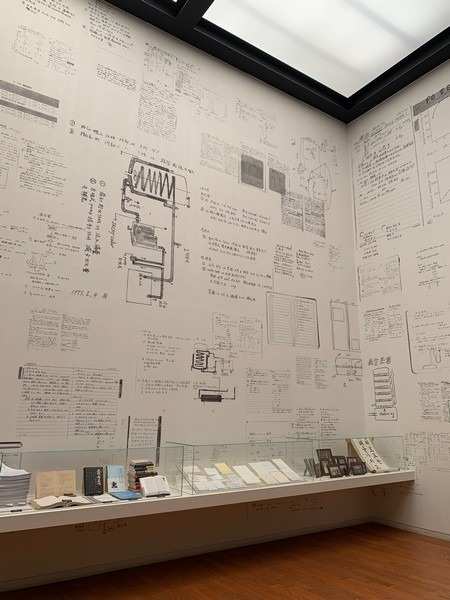
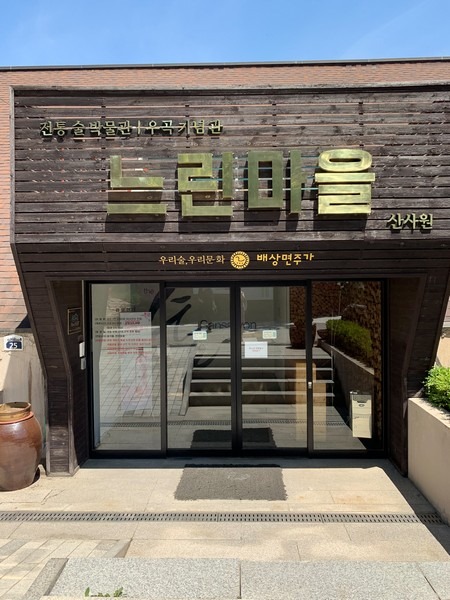
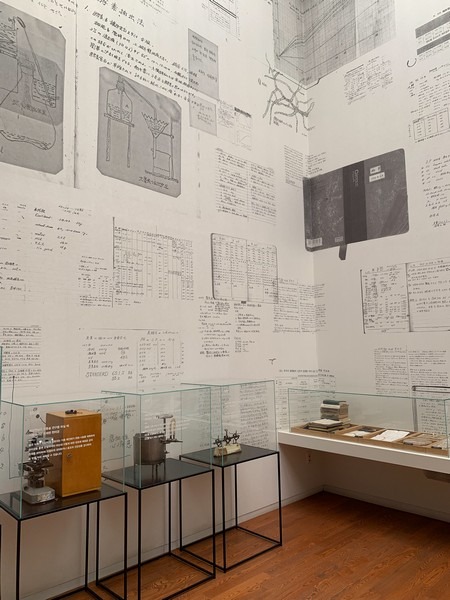
Your admission to the museum gets you a ceramic cup that you can use to sample dozes of different types of alcohols. This is where Sansawon really wins in my opinion.
I’ve lived in Korea for 13 years and one thing I’ve learned after countless Korean-style five round nights out and the more than likely hang-over the next day because of it, drinking traditionally brewed liquor actually causes far less of a hangover. Is that just me? The cheap green bottle stuff will really do you in, but get something a bit higher end and traditionally processed and you’ll have a good night and a good morning. Trust me.
Sansawon is the perfect place to try numerous alcohols and figure out what you should really order the next time you’re out. Of course don’t go overboard and get drunk. This is not the place for that, but it is the place to try some much better liquor than you’ve probably enjoyed at most night out spots.
The great thing is that you can also purchase some before you go and what’s surprising is how really budget-friendly they are. The bottles, and some in very nice packaging, was a lot cheaper than I expected so be prepared to take some home. You’ll want to. Trust me.
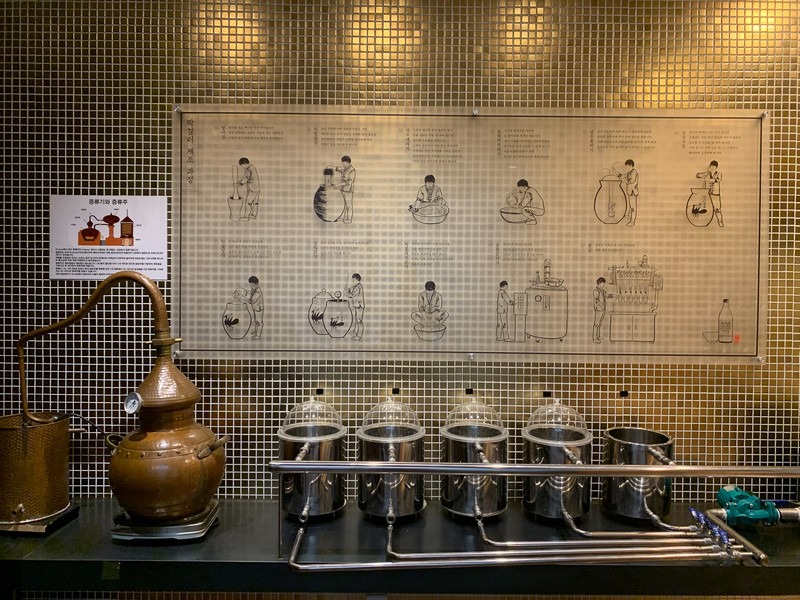
Trying the drinks and don’t forget to try the snacks that are also available and made in house. The food for sampling may include rice cakes, Sanghwa dumplings, and pickled vegetables. From here, you’ll likely want to purchase a few bottles to take home and then after that you’ll find the last part of the museum which is actually devoted to Baesangmyeon. Learn about the man that the brewery is named after and how he started.
Two of the more beautiful installations in the museum are here and I’m sure being related to the man helped with that. There are some beautiful spaces where you can see his original notes and diagrams when it came to processing his own liquor and this is a great introduction into what you’ll then see after you depart and walk just across the parking lot to the actual brewery.
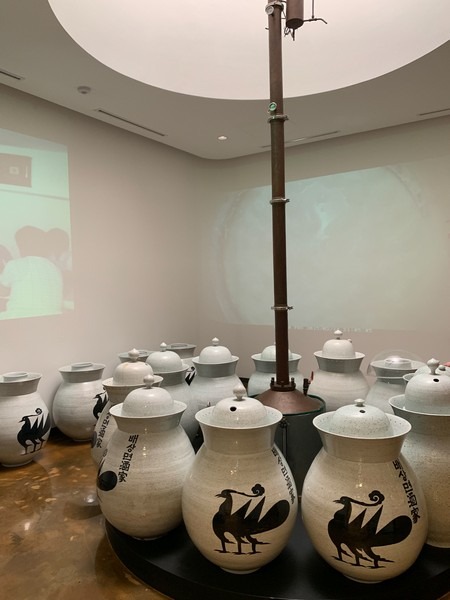
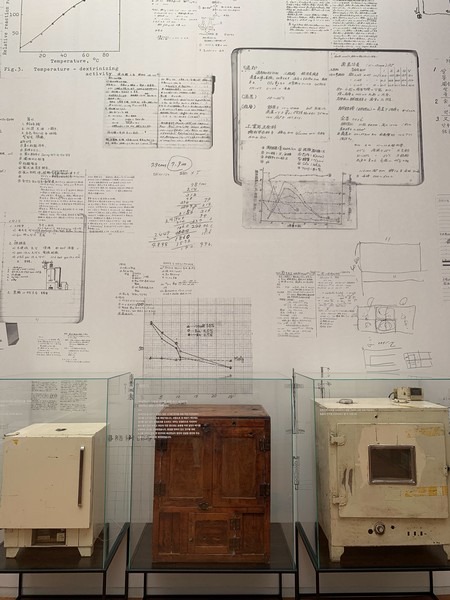
Baesangmyeon Brewery
Established in 1996 by Bae Yeong Ho, the second son of Bae Sang Myeon who owns and operates Kooksoondang Brewery, Baesangmyeon Brewery, which his son obviously named after his father, is a traditional liquor brewery that makes some popular drinks you may have seen in Korean supermarkets already.
They make Sansachun, a desert-wine and Daepo, a mild alcohol with dandelion, but one of their more well known products is the Neurin Maul Makgeolli, the name means “slow village” and was a big shift and push in the movement to re-introduce aspartame and additive-free makgeolli back into the market.
Since you probably visited the above museum first and learned about the processes, the important nuruk, and tried tried tried, now you have a bit of understanding before you head to the working brewery area of the complex.
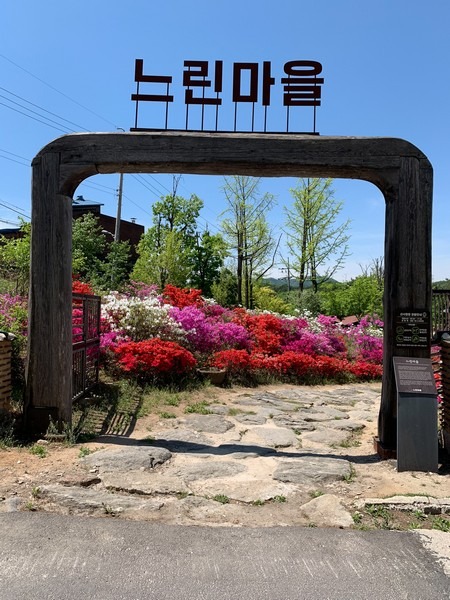

Walk through a gate to the left of the Sansawon Museum and you’ll see gigantic onggi jars. The next time I go, I need to stand next to one so you can really understand how huge these are. If you’re bringing children with you, you will not be able to see them just know that. Follow the winding path through the jars and you can find some of the older machines.
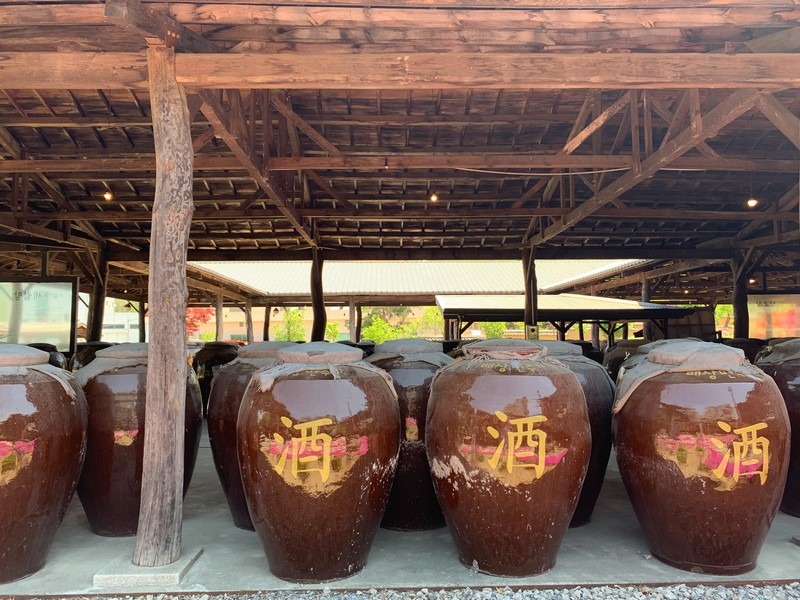
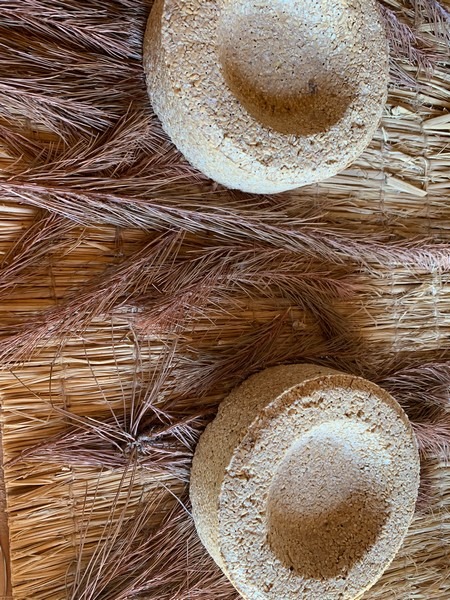
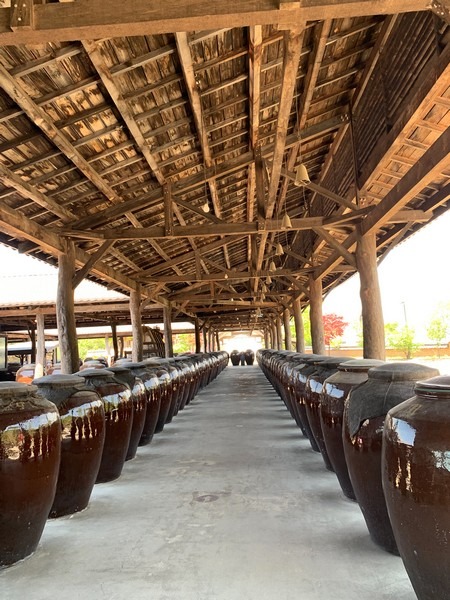
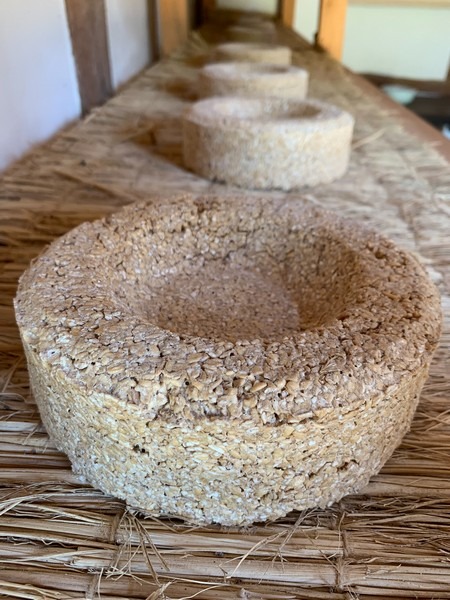
Walk through the massive maze of onggi and then you’ll be dropped off in a garden that has pavilions and Hanoks surrounding. One Hanok building acts as a gallery where you can see some nuruk and the larger Hanok houses a cafe.
The cafe wasn’t open the day we visited so I’m not sure the actual hours, but whether or not it’s open, you can still walk up the stairs to sit on the second level of this rooftop and just take in the views of the complex and mountains that surround it. It’s really a beautiful space and likely after enjoying quite a few cupfulls of liquor and makgeolli, you can use a little seated break.
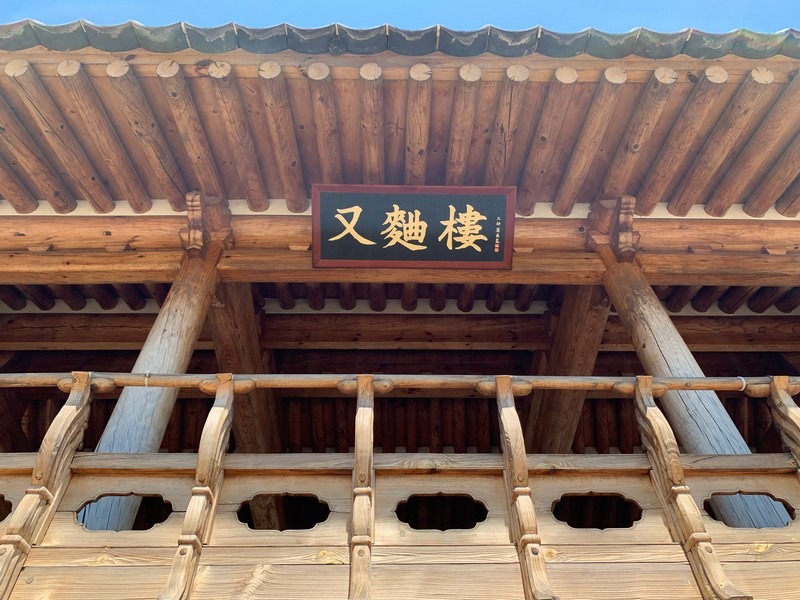
What is nuruk?
Since I’ve mentioned it a few times in this article and now pictured it above, I think I should explain a bit more about what nuruk is. Korean alcohol is made with three main ingredients including rice, water, and nuruk. The nuruk is what is pictured in that first and third picture in the collage just above there.
Simply, nuruk is crushed wheat that is packed together to allow for mold and yeast to grow on it. That’s extra simple, but the nuruk can change quite a bit and change the drink drastically depending on where it is made.
After the nuruk has been packed, it is left in a high humidity location on a bed of straw, which you can see above, for a week so it grows a fungi. After seven days, the humidity is decreased and the nuruk dries out. Nuruk can actually be made with different ingredients including wheat, rice, and barley but again, the type, location, and source are all very important and can greatly impact that end result. This is just one of the very interesting things you can learn when you visit the brewery.
Brewing liquor and makgeolli has a lot of twists and turns and if you want to try it at home, you totally can, but it’s good to know the basics. For a Makgeolli Brewing Kit, check out the one Hyseun House as has produced. It’s great and a great introduction product into brewing makgeolli at home if you want to try.
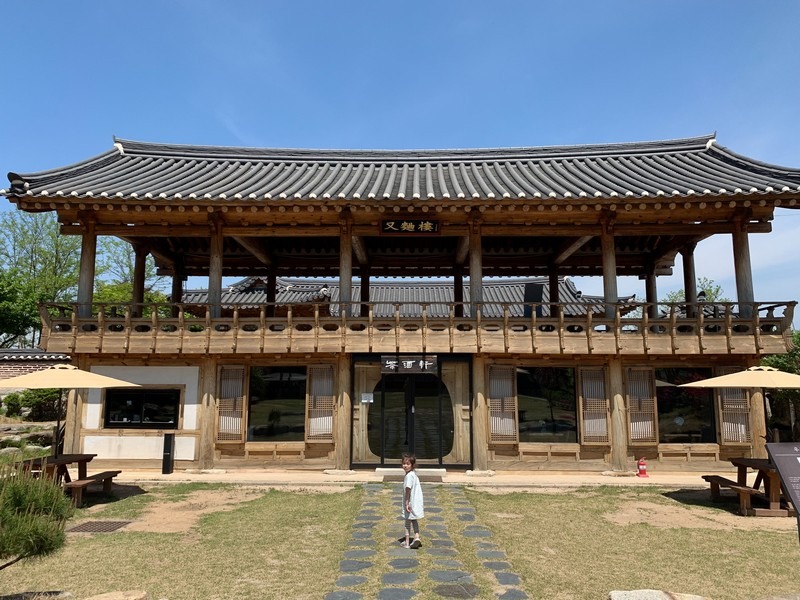
While you most definitely need to visit the museum and brewery, there are some slow brew pubs in Seoul and around Korea too where you can also sup and try some of the outstanding products from the brewery. To find a location near you, visit www.slowbrewpub.com. The website is in Korean, but if you use the Google Translate button on the browser, you can easily figure out where all of the pubs are.
Did you like this post? Pin It!
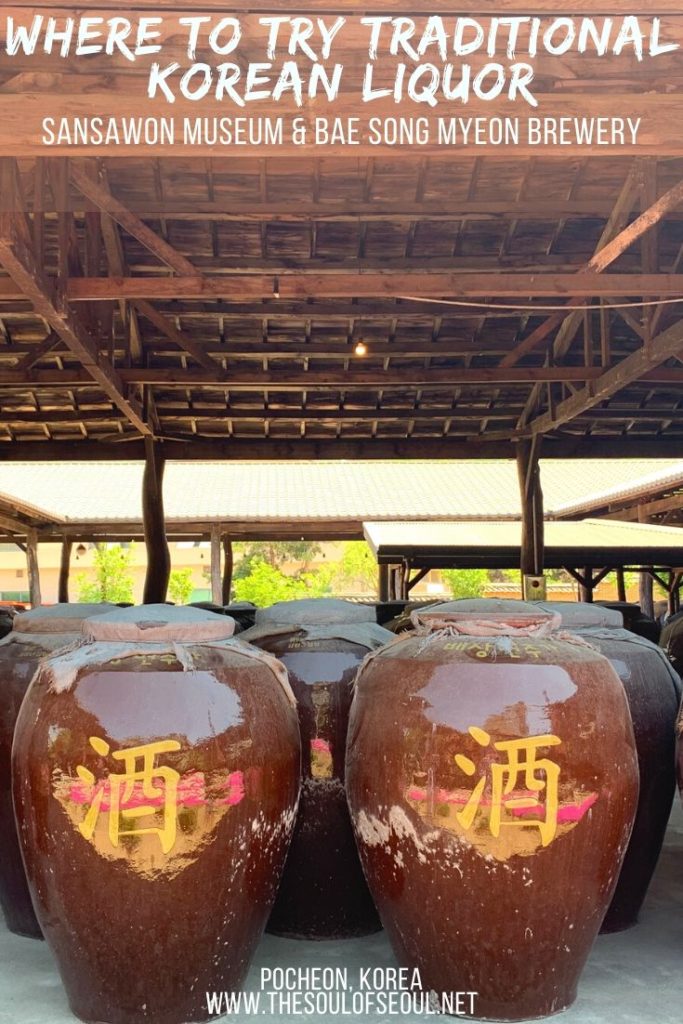
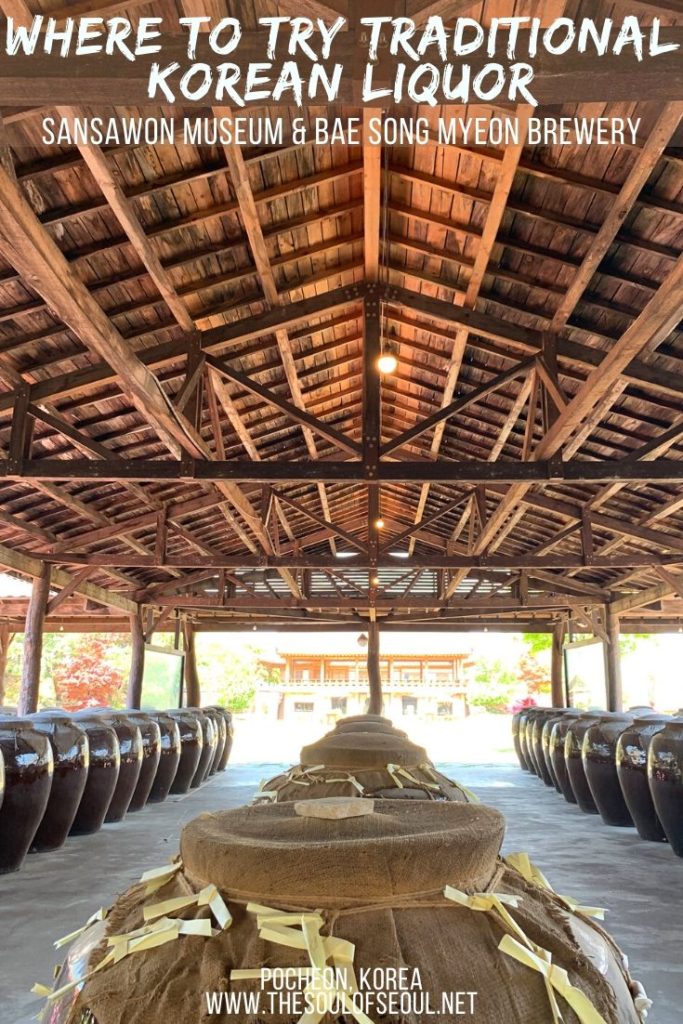
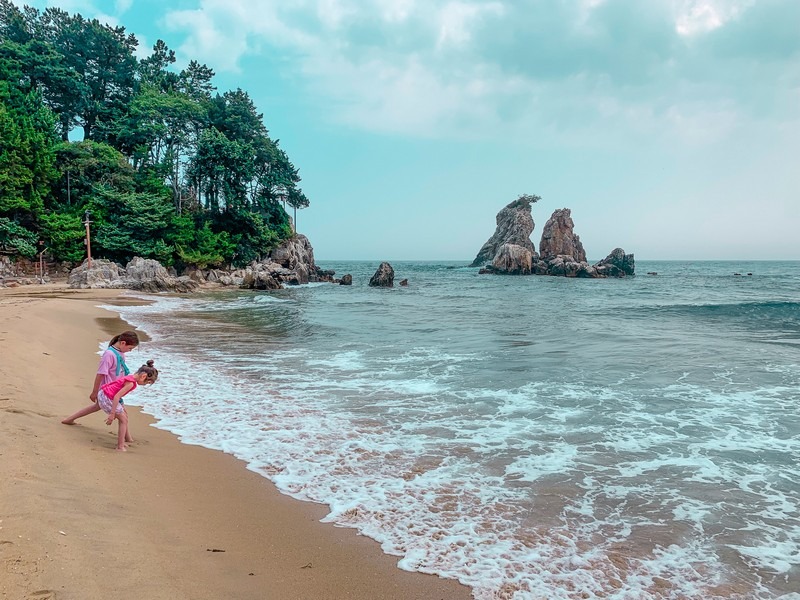

2 Comments
Sammy
Hey there! I found your blog on coincidence and I think it’s really amazing and well made! I was wondering if there’s any recommendation you would do for a 7 day ish trip to Seoul, Korea during New Years? I initially plan to just stick in Seoul but reading your blog makes me kinda be more adventurous!
Hallie Bradley
There’s definitely plenty you can in 7 days. You might also consider joining a Sunrise Tour for New Years. We have New Years Eve festivities, but Koreans traditional celebrate the first day of the year by seeing the first sunrise of the year and there are tours which will take you out to the east coast for it where the sun rises first. That’s great fun.